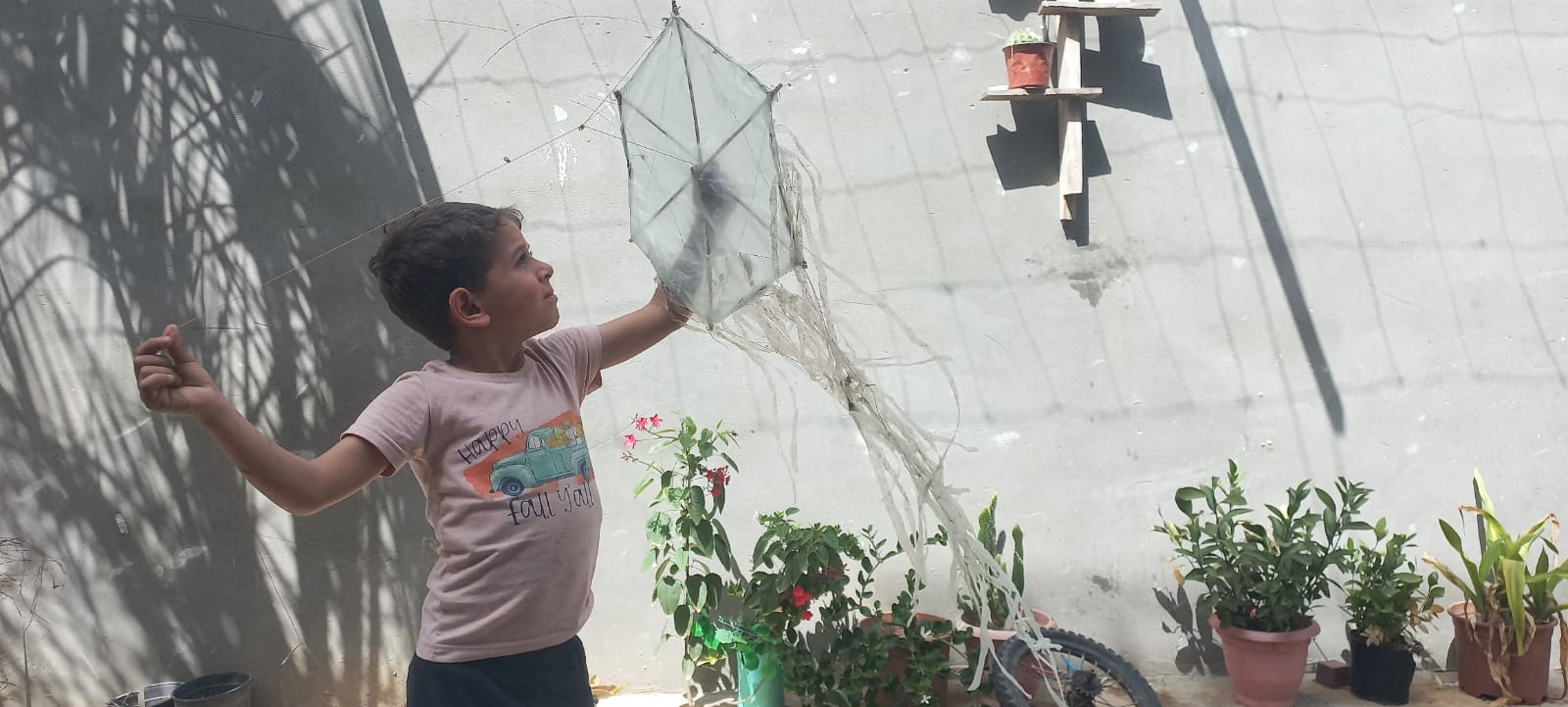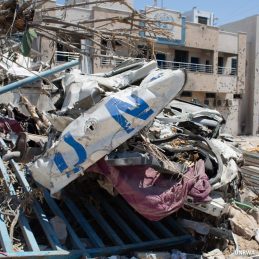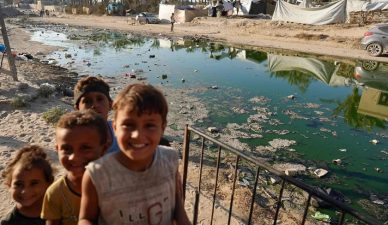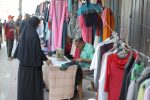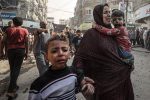By Wafa Aludaini
“It’s flying higher and higher!” shouts eight-year-old Ahmad Malaka, his kite soaring in the sky above him. Ahmad is a displaced Palestinian from Gaza City, currently relocated to Deir Al-Balah with his family. “Watching my kite dancing in the sky is the best feeling ever,” Ahmad says.
“I feel as if I am flying with it, and it makes me forget the constant aggression by the occupation,” Ahmad says. “I don’t have any other games or toys to play with except flying the kite.”
Ahmad’s father noted that Ahmad had never previously played with the kite, but now it is among the only options to distract kids from the ongoing Israeli atrocity. People left toys behind when they fled their homes, and the Israeli occupation has targeted and destroyed amusement parks and sports clubs.
“I used to play video games on my phone or watch cartoon or play with my toys with my siblings in my spare time,” Ahmad says, “but now there is no electricity to charge phones or watch TV, and I lost all my toys and my siblings after the Israeli occupation targeted our home in Al-Zaytoon (Gaza suburb), killing my uncle and our entire family.”
As the Israeli occupation unleashed its genocidal onslaught, they imposed full closure on the impoverished Gaza Strip, banning even the most basic essentials. The few small spaces of leisure across the tiny enclave have been turned into piles of rubble, while some clubs and football stadiums have become unprotected sanctuaries for displaced Palestinians.
The lives of one million Palestinian children in the Gaza Strip hang in the balance as they endure severe systematic infringement under the ongoing genocidal war, increasingly become targets for the occupation forces. They stand on the brink, facing the peril of death, injury, maiming, and the harrowing prospect of famine and yet another forced displacement. Every Palestinian child in Gaza has survived multiple Israeli offensives. Yet the ongoing carnage is the most brutal to date, claiming the lives of at least 15,000 children so far, leaving thousands of other children critically maimed and injured. Thousands more are still missing and unaccounted for after Israel bombed their homes and displacement zones. According to UNRWA, at least 17,000 Palestinian children are orphaned.
In the sand dunes above Mawasi, the sheltering zone in southwest Gaza, the air is filled with the odd combination of reconnaissance drones and massive bombardment, mixed with the laughter and shouts of the children running beneath the kite. One or two children held the string of the kite while others shouted and cheered encouragingly, running in groups as it swooped and soared, picking it up together when it fell to the earth. Throughout the continuous horror of Israel’s ongoing terrorist assault, they try to find ways to have fun amidst the poor options for entertainment for children in Gaza. Lack of schooling coupled with the relentless Israeli bombings, hunger, malnutrition, displacements and bereavement has deprived children of the normalcy of play and outdoor activities, forcing them to remain indoors or in makeshift displacement tents in refugee camps and pushing them to explore ways to escape from their squalid conditions.
Siraj Al-Hellou, 11, uses his small fingers to decorate handmade kites with the four colors of the Palestinian flag. He makes the toys simply, out of white plastic sticks and a few strings, commodities which are hard to come by, often taking days of searching to locate, and barely affordable when the necessary plastic, sticks and string finally are found.
“I have gotten in on the kite game since we reach the displacement zone in Rafah first and now in Al-Mawasi,” Siraj says. “I managed making it professionally, so I’ve started to make a living from selling kites to help my family survive in these difficult conditions where everything is so expensive if it is found.” Siraj says that he likes to decorate the kites with the colors of the Palestinian flag as a challenge to the occupation’s murderous warplanes and drones that fly across the Gaza sky.
Siraj sells the kites for one to two dollars, or more according to size. He sells several generic kite types; the most popular in Gaza are the flat and bowed. The materials for constructing kites are bamboo or wood, fabric, paper or plastic and string. What is meaningful about flying the kite, Siraj explains that “kites rise highest against the wind – not with it.” By rising up against the wind and pushing through adversity, the children learn to overcome challenging obstacles that comes their way. As they play, they learn to adjust the strings of the kite, learning to adapt to changing wind conditions and overcome setbacks, helping them develop and refine the skills to cope with and overcome the ongoing harsh conditions in the Gaza Strip.
-Wafa Aludaini is a Gaza-based journalist. She contributed this article to the Palestinian Information Center.

